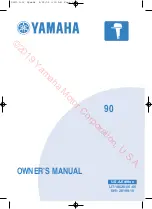
4
DS723DB1
CDB43L21
1. SYSTEM OVERVIEW
The CDB43L21 evaluation board is an excellent means for evaluating the CS43L21. Digital audio signal interfaces
are provided, and an FPGA is used for easily configuring the board.
Section 2. “Software Mode Control” on page 7
and
Section 3. “Hardware Mode Control” on page 11
provide configuration details.
The CDB43L21 schematic set has been partitioned into six pages and is shown in
through
provides a description of all stake headers and connectors, including the default factory
settings for all jumpers.
1.1
Power
Power is supplied to the evaluation board through the +5.0 V binding posts. Jumpers connect the
CS43L21’s power supplies to a regulated voltage of +1.8 V, 2.5 V or +3.3 V for VL and +1.8 V or 2.5 V for
VD, VA and VA_HP. All voltage inputs must be referenced to the black binding post ground connector.
For current measurement purposes only, a series resistor is connected to each supply. The current is easily
calculated by measuring the voltage drop across this resistor.
NOTE:
The stake headers connected in parallel with these resistors must be shunted with the supplied
jumper during normal operation.
WARNING:
Please refer to the CS43L21 data sheet for allowable voltage levels.
1.2
Grounding and Power Supply Decoupling
The CS43L21 requires careful attention to power supply and grounding arrangements to optimize perfor-
mance. The CDB43L21 demonstrates these optimal arrangements.
provides an over-
view of the connections to the CS43L21.
shows the component placement,
shows the top layout, and
shows the bottom layout. The decoupling ca-
pacitors are located as close to the CS43L21 as possible. Extensive use of ground plane fill in the evaluation
board yields large reductions in radiated noise.
1.3
FPGA
The FPGA provides digital signal routing between the CS43L21, CS8415 and the I/O stake header. It also
configures the Hardware Mode options of the CS8415 and provides routing control of the system master
clock from an on-board oscillator, the CS8415 and the I/O stake header. The Cirrus FlexGUI software and
“FPGA H/W Control” switches provide full control of the FPGA’s routing and configuration options.
Section 2. “Software Mode Control” on page 7
and
Section 3. “Hardware Mode Control” on page 11
provide
configuration details.
1.4
CS43L21
A complete description of the CS43L21 is included in the CS43L21 product data sheet, and a schematic is
provided in
The CS43L21 may be configured using either the Cirrus FlexGUI or the on-board “CS43L21 H/W Control”
switches. The Software Mode control port registers are accessible through the “Register Maps” tab of the
Cirrus FlexGUI software. This tab provides low-level control of each bit. For easier configuration, additional
tabs provide high-level control. The Hardware Mode, stand-alone controls for the CS43L21 are accessible
through the on-board, stand-alone switches, “CS43L21 H/W Control.”
Clock and data source selections are made in the control port of the FPGA, accessible through the “General
Configurations” tab of the Cirrus FlexGUI software or through the on-board “FPGA H/W Control” switches.
Summary of Contents for CDB43L21
Page 16: ...16 DS723DB1 CDB43L21 7 CS43L21 SCHEMATICS Figure 10 CS43L21 and Analog I O Schematic Sheet 1 ...
Page 17: ...DS723DB1 17 CDB43L21 Figure 11 S PDIF I O Schematic Sheet 2 ...
Page 18: ...18 DS723DB1 CDB43L21 Figure 12 FPGA Schematic Sheet 3 ...
Page 19: ...DS723DB1 19 CDB43L21 Figure 13 Level Shifters I O Stake Header Schematic Sheet 4 ...
Page 20: ...20 DS723DB1 CDB43L21 Figure 14 Control Port I O Schematic Sheet 5 ...
Page 21: ...DS723DB1 21 CDB43L21 Figure 15 Power Schematic Sheet 6 ...
Page 22: ...22 DS723DB1 CDB43L21 8 CDB43L21 LAYOUT Figure 16 Silk Screen CDB43L21 CS43L21 CS43L21 CS43L21 ...
Page 23: ...DS723DB1 23 CDB43L21 Figure 17 Top Side Layer ...
Page 24: ...24 DS723DB1 CDB43L21 Figure 18 Bottom Side Layer ...





































